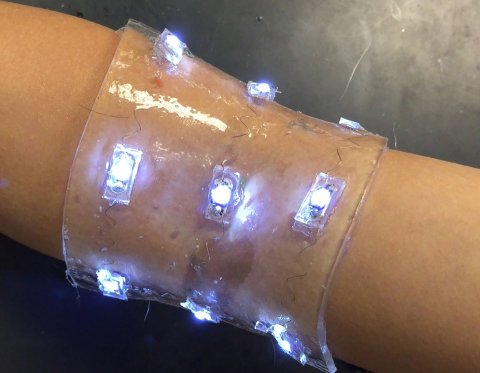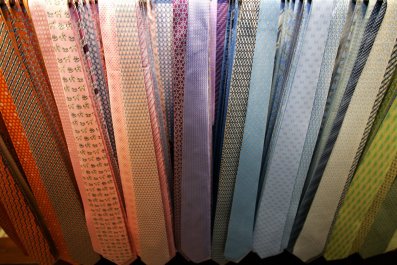Legend has it that in 1920, the first adhesive bandage, the Band-Aid, was invented by a young Johnson & Johnson employee newly wed to a woman who had a knack for cutting her fingers while preparing dinner. And for nearly 100 years since, we've been using the same basic design—cotton gauze, crinoline and an adhesive strip—to cover our nicks and burns. But in recent years, science has begun to give us all types of bandages that go way beyond just covering scrapes and cuts. Some can stop bacterial infections or put an end to bleeding in as little as 15 seconds, while others can detect bedsores before they become visible. Now, researchers from MIT have created one out of a malleable polymer equipped with sensors, which is capable of stretching over your skin and healing wounds faster.
A team led by Xuanhe Zhao at MIT's Department of Mechanical Engineering designed a hydrogel bandage, made of highly absorbent polymer chains, that can stretch to nearly double its length to cover wounds in areas where placing a traditional bandage would be difficult—such as a knee or elbow, where robust flexibility is essential. It's also been embedded with electronic components for monitoring body temperature and other vitals—the idea is that drug reservoirs could be built into the "smart wound dressing," and the sensors could determine when to release the medicines and how much. All of the sensor data can be monitored via a smartphone, giving health care providers insight into how the wound is healing, when drug reservoirs are low and, for example, if the patient has become feverish.

Zhao says his team's big breakthrough was designing a hydrogel with the flexibility of human soft tissue that could also adhere to nonporous materials like glass, aluminum, bronze and more. Most synthetic hydrogels are inflexible, easily broken and unable to effectively stick to electronic materials. Though the bandage might initially be used on top of the skin, Zhao believes the hydrogel they've designed could have internal applications as well—he imagines it being used, for example, to deliver neural probes to the brain. "The brain is a bowl of Jell-O," Zhao said. "Currently, researchers are trying different soft materials to achieve long-term biocompatibility of neural devices." The hydrogel matrix, he says, could be a solution, because it's wet and soft like the human body.
Hydrogels are also increasingly being used in a variety of ways beyond healing wounds. For example, one team of researchers is currently looking at how they can be used in the next generation of condoms, which contain anti-HIV properties. Zhao's next project, he says, is to use the hydrogel as a way to get a glucose sensor inside the human body. If it works, it could eliminate the need for those with diabetes to prick their fingertips and draw blood multiple times a day.























